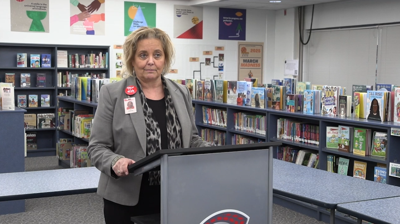LIMA, Ohio (WLIO) — The leader of the Lima City School District is expressing concerns about the state's use of vouchers to fund private schools, saying it undermines public education. Jill Ackerman, the district's superintendent, emphasized the growing shift of state funds away from public schools, citing the rising cost of the voucher program.
Ackerman pointed out that the voucher program has increased dramatically, with state funding rising from nearly $600 million last school year to $970 million this year.
"What you'll find is that the higher number of vouchers are going to families who can afford to pay for private education," Ackerman said.

Jill Ackerman, the district's superintendent, emphasized the growing shift of state funds away from public schools, citing the rising cost of the voucher program.
Next week marks Public School Week, and Ackerman is using the occasion to highlight how these shifts in funding are impacting local schools. She stressed that the voucher system operates without the same accountability measures as public schools, leaving districts struggling financially.
"That is money that is completely unaccounted for, no transparency, no auditing, and it goes into a system that has none of the kinds of mandates that we have in a public school. Public school districts all around us are suffering financially and are having to make cuts because they are not getting fully funded as they should be," Ackerman said.
The Cupp-Patterson Fair School Funding Plan, which is currently under debate in the state legislature, is another concern for public school systems.
"Because we have this large amount of money — our taxpayer dollars — going into this private system, which again has no accountability, it’s a real concern," Ackerman said. "Public school districts are suffering financially and moving to make cuts because they are not getting fully funded as they should be."
This school year, 591 students have received vouchers, with each voucher representing more than $8,000 in state funding per student. Ackerman noted that nearly $5 million in public funds is leaving the district as a result. Originally, vouchers were intended to assist low-income students in obtaining a private education, but only 28 of the voucher recipients this year are low-income. The remaining 563 students — 95 percent of those receiving vouchers — are able to afford private tuition without assistance.
"So now we've just opened it up, and virtually everybody who can afford to pay for a private education is still getting a voucher and is able to attend," Ackerman explained.
Ackerman added that many of the voucher recipients have spent their entire school careers in private schools, paying tuition without issue.











